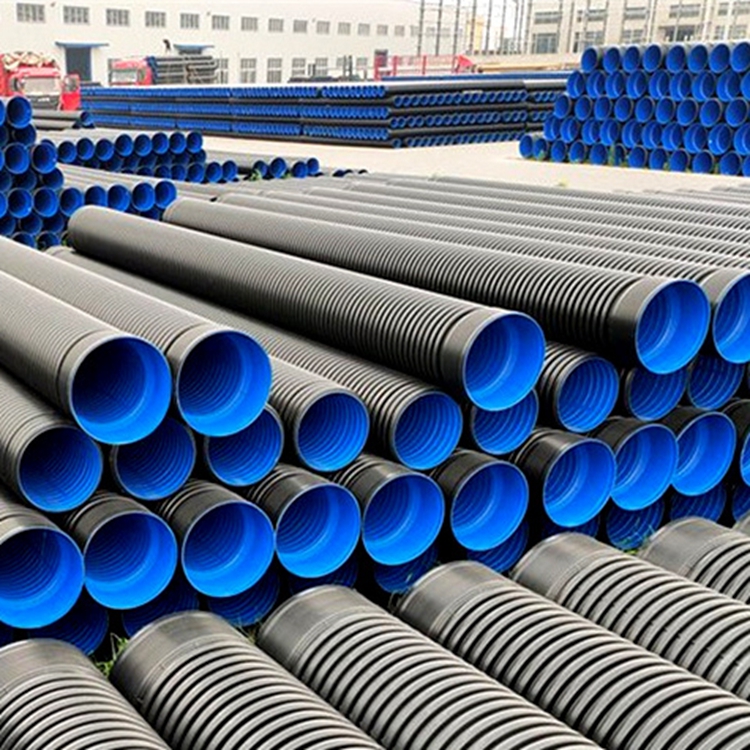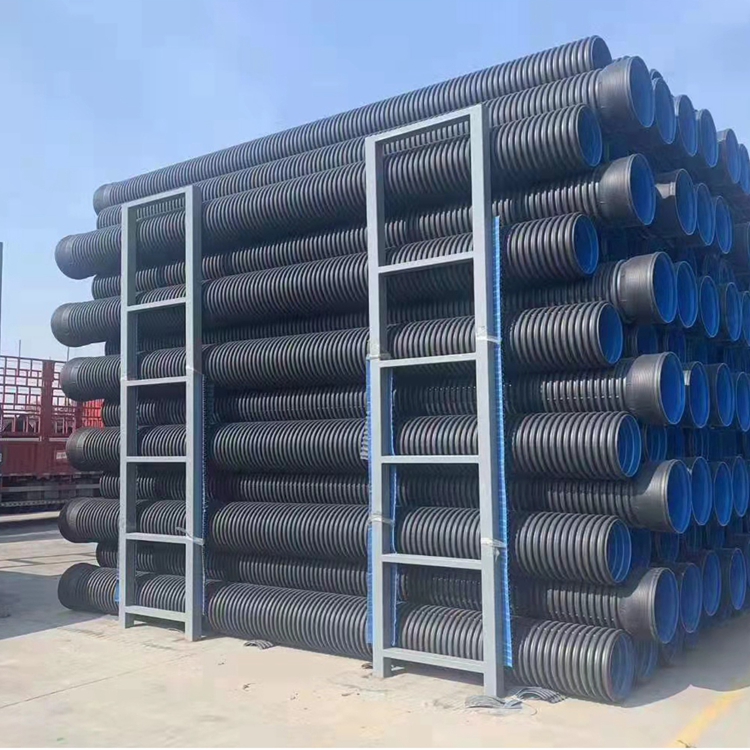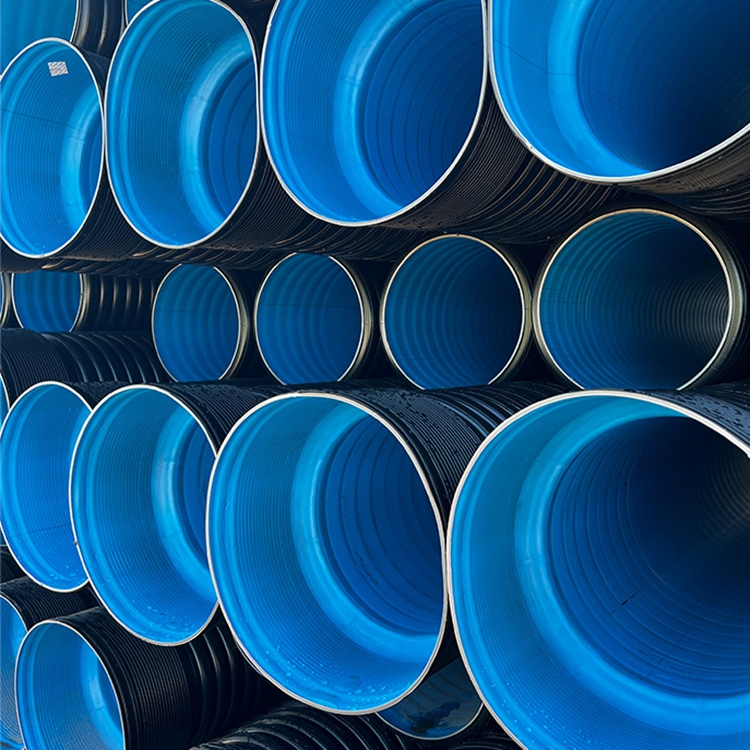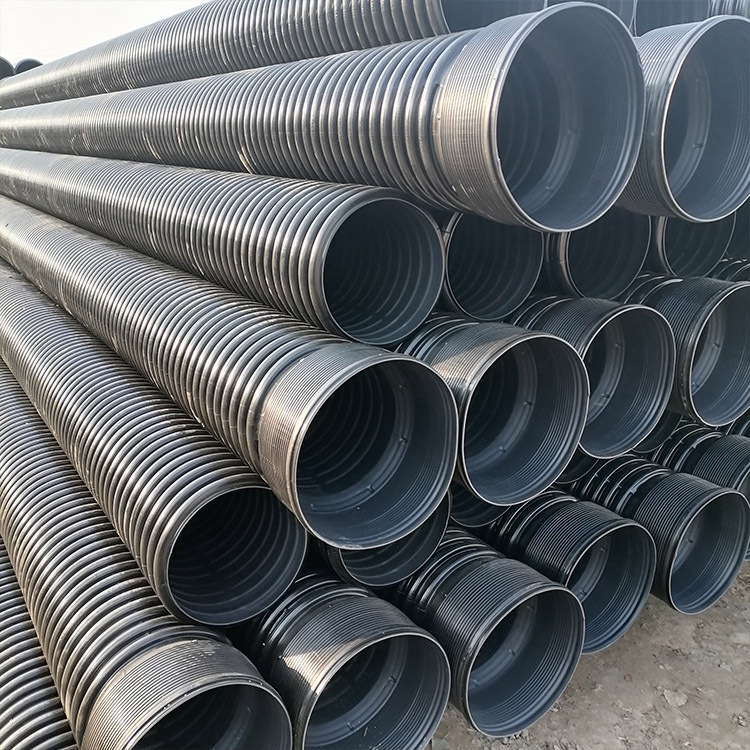HDPE double-wall corrugated pipe, also known as PE corrugated pipe for short, is a pipe made of high-density polyethylene (HDPE). Its structural features are a smooth inner wall and a corrugated outer wall. This design not only improves the strength and toughness of the pipe, but also greatly reduces the weight of the material, making it easier and quicker to transport and install.
Performance characteristics:
1. Strong pressure resistance: The outer wall has an annular corrugated structure, which greatly enhances the ring stiffness of the pipe, thereby enhancing the pipe’s resistance to soil load.
2. Smooth inner wall: small fluid resistance, large flow, suitable for drainage and sewage.
3. Light weight: HDPE material is light, which greatly reduces the transportation and installation costs of the pipeline, and shortens the construction period.
4. Corrosion resistance: It has good chemical stability and can resist erosion by a variety of corrosive substances.
5. Long service life: It can be buried for more than 50 years.
6. Strong adaptability: It has good flexural properties and can adapt to uneven soil settlement.
7. Environmental protection: HDPE material is non-toxic and non-diffusive, and can be recycled, meeting environmental protection requirements.
Application fields:
HDPE double-wall corrugated pipes are widely used in municipal engineering, construction engineering, agriculture and industry. In municipal engineering, it is often used as a drainage pipe. Its excellent drainage performance and corrosion resistance make it play an important role in urban drainage systems. In the agricultural field, HDPE double-wall corrugated pipes are widely used in irrigation systems. Its corrosion resistance and flexibility enable it to adapt to various complex farmland environments. In addition, it is also used in drainage and sewage systems in the industrial field, as well as protective pipes for communication and power cables.
Production process:
The production process of HDPE double-wall corrugated pipe mainly includes extrusion, molding, cooling and cutting. First, HDPE particles are added to the extruder, and the basic shape of the pipe is formed through a high temperature and high pressure extrusion process. Then, the extruded pipe is sent to the molding machine and molded by the mold. Next, the molded pipe is sent to the cooler for cooling to achieve a stable size and shape. Finally, the cooled pipe is sent to the cutting machine for cutting to form the required length of pipe. Throughout the production process, strict quality control is required to ensure that the quality of the product meets the relevant standards and requirements.






